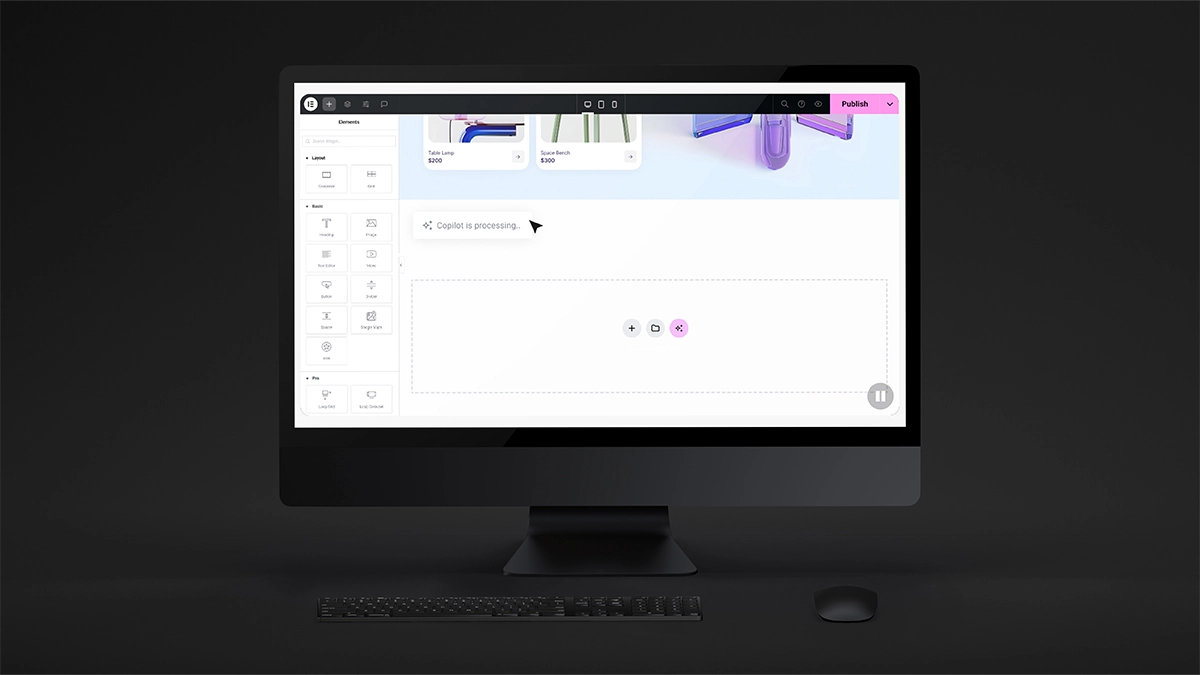If you’ve ever typed “how to build a website quickly” into Google, chances are you’ve stumbled across one of the many drag & drop website builders out there. Platforms like Wix, Squarespace, and even Shopify promise to make website creation fast, easy, and cheap — no coding required.
For small businesses and startups working with tight budgets and minimal time, this can sound like the perfect solution. But here’s the thing: what seems like a shortcut now could cost you a lot more in the long run.
In this post, we’ll take a closer look at the hidden downsides of drag & drop website builders and explain why they’re not always the best choice for serious business growth.
What Are Drag & Drop Website Builders?
Drag & drop builders are tools that allow you to design a website visually—by dragging elements like images, text blocks, buttons, and forms into place—without needing to write a line of code.
Popular platforms include:
- Wix
- Squarespace
- Shopify (for e-commerce)
- Elementor (for WordPress)
They’re often marketed as beginner-friendly, low-cost options for getting a site online quickly. But while they do lower the barrier to entry, they also create new problems you might not expect.
Pros & Cons of Drag & Drop Website Builders
| Pros | Cons |
|---|---|
| Easy to get started | Limited design and branding flexibility |
| No coding required | Slower loading speeds due to bloated code |
| Built-in hosting and support | Ongoing monthly costs can add up |
| Large template libraries | Difficult to switch platforms later |
| Ideal for small, simple websites | SEO and accessibility limitations |
1. You Don’t Own Your Website (Not Fully, Anyway)
One of the biggest downsides of using certain drag & drop builders is that you don’t actually own your site in the traditional sense. The platform hosts it, and you’re essentially “renting” space.
This is particularly relevant in the case of Wix and Squarespace. Other software, such as Elementor, which is a plugin for WordPress, doesn’t have this issue.
- If the service shuts down or changes its pricing drastically, your website goes with it.
- Moving your site to another platform later can be difficult or even impossible, meaning you’re locked in.
- You’re limited by their terms and functionality, even if your business grows beyond them.
Why this matters: If you’re investing time and energy into building a brand, you want a foundation you control, not a rented one that could change at any moment.
2. Performance Issues (That You Can’t Fix)

Speed and performance are crucial for keeping visitors on your site. Unfortunately, many drag & drop sites are bloated with unnecessary code, especially when loading pre-built elements.
- You can’t fully optimise hosting or backend code.
- You’re limited to the platform’s caching and speed settings.
- Mobile performance can be especially poor on certain templates.
Think about it this way. Just because you don’t use a certain element in your design, such as an animated block, doesn’t mean it doesn’t exist in the back end of the website. Drag & drop software inherently needs all the code required for all the elements that it offers, whether you decide to use them or not. This is what slows down websites.
Why this matters: Slow websites hurt conversions and SEO. And worse, you have little control over how to fix it.
3. SEO Limitations That Hurt Your Visibility
Most drag & drop website builders claim to be “SEO-friendly”, but there’s a big difference between basic SEO settings and full search engine optimisation.
Many of these platforms:
- Don’t give you access to technical SEO features like schema markup, page speed optimisation, or advanced redirects.
- Limit your ability to structure URLs, alt tags, or metadata properly.
- Have slower load times, especially if your site is media-heavy or template-based.
Why this matters: If your goal is to get found on Google, you’ll need more than just editable page titles. DIY platforms often fall short when it comes to ranking locally or competing in a saturated market.
read more
Is SEO Dead? An In-Depth Analysis
4. Limited Design Flexibility (Despite the Drag & Drop)
Drag & drop sounds like you can do anything. But in reality, you’re stuck working within templates and blocks. Want something unique? You’ll likely hit a wall.
- Custom layouts can be difficult to achieve without breaking the template.
- Trying to “force” a design often results in clunky user experiences.
- Branding elements like typography, spacing, and responsiveness can be harder to control.
Why this matters: Your website is often your first impression. If it looks like a cookie-cutter template, you risk blending in, not standing out.
5. Scaling Is Difficult (And Often Expensive)
Most small businesses don’t stay small forever. What happens when you want to add a booking system, e-commerce, a membership area, or integrate your CRM?
With drag & drop builders:
- Custom features often require third-party apps (which cost more).
- Integrations may not be available or work well.
- As your needs grow, so does your monthly fee — quickly.
Why this matters: What seems like a cost-saving decision now can become more expensive than a custom-built website in just a year or two.
6. You Might Still Need a Developer

Here’s the irony: the “no-code” promise doesn’t always hold up.
Many users find themselves:
- Hiring someone to fix template bugs.
- Paying for someone to optimise their SEO properly.
- Outsourcing changes that they can’t make within the drag & drop interface.
Why this matters: If you’re going to need support anyway, it may be worth investing in a tailored website from the start.
Looking for a developer to help with your website?
Check out our web design services for small businesses
7. Poor Long-Term Branding
Your website is part of your brand, and first impressions count.
Drag & drop sites:
- Often look similar to others using the same theme.
- Can’t fully represent your business’s personality.
- Might not align well with your printed materials, packaging, or social visuals.
Why this matters: When customers recognise your brand across all platforms, it builds trust. A generic site undermines that consistency.
8. Basic Analytics & Reporting

Understanding how people interact with your website is vital for improvement.
But:
- Drag & drop platforms offer only surface-level insights.
- You might struggle to install Google Analytics properly.
- Event tracking, heatmaps, or behaviour tools are often unsupported.
Why this matters: Without good data, you’re just guessing — and that’s a risky way to grow.
9. Hidden Costs Add Up
At first glance, drag & drop builders seem cheap. But over time, things like:
- Premium templates
- Extra bandwidth
- Email accounts
- Third-party plugins
- App integrations
…can all add hidden costs. What starts at £10/month can easily reach £50–£100/month with a few added features.
Why this matters: A custom-built WordPress site might have higher upfront costs, but lower running costs, and better ROI over time.
10. Lack of Support (When You Really Need It)
Customer support for DIY platforms is often limited to:
- Help centres
- Forums
- Live chats with long wait times
When something breaks or you need guidance, there’s no dedicated person who understands your business or goals.
Why this matters: Your website is a key part of your business — when something goes wrong, you want reliable help, not a chatbot.
So, What’s the Alternative?
If you’re serious about using your website to grow your business, a custom-built site — even a basic starter version — is often the better long-term choice.
With a professionally built website, you’ll get:
- A solid foundation you own and control.
- Built-in SEO best practices.
- A design tailored to your audience and brand.
- Scalability for future growth.
- Ongoing support from someone who knows your business.
Looking for a developer to help with your website?
Check out our web design services for small businesses
The Hidden Learning Curve of Page Builders
At first glance, these tools seem easy. But most users quickly realise that getting things just right takes hours of trial and error.
Customising layouts, fixing mobile responsiveness, and understanding how to make changes without breaking your layout requires more time than expected.
Even small tweaks — like adjusting a font size or fixing an image placement on mobile — can lead to frustration. You might end up needing to hire help anyway, defeating the purpose of going DIY.
When Are Drag & Drop Builders Right for Your Business?
There’s a time and place for these tools — here’s when they can be the right option:
- You need something online fast, like a one-page site or landing page.
- Your budget is limited, and you’re not ready to invest in custom development.
- You’re testing a business idea, and don’t want to commit to a full website yet.
- You’re comfortable with DIY and happy to do your own updates and edits.
That said, as your business grows, your website needs to grow with it. And that’s where the cracks in drag & drop platforms begin to show.
Top 5 Page Builders for Small Businesses
| Platform | Starting Monthly Cost | Hosting Included? | Key Features |
|---|---|---|---|
| Wix | £7.50 | Yes | Templates, App Market, Built-in SEO tools |
| Squarespace | £10 | Yes | Sleek templates, blogging tools |
| Shopify | £25 | Yes | Ideal for e-commerce |
| Elementor | Free / £49 per year (proo) | No (WordPress) | Advanced design control, flexible layout |
Final Thoughts
Drag & drop website builders are great for testing ideas or launching quickly. But if you’re building something serious — something that reflects your brand, attracts the right clients, and grows with your business, they might be holding you back more than helping.
The hidden downsides of drag & drop website builders are easy to overlook at first. But once your business outgrows the platform, those limitations become hard to ignore.
If you’re ready to build a website that works as hard as you do, get in touch. We’ll help you take the next step — without the restrictions.


